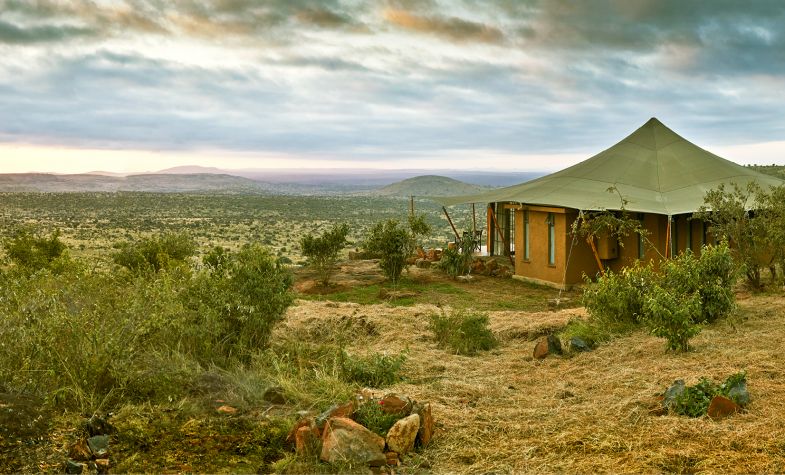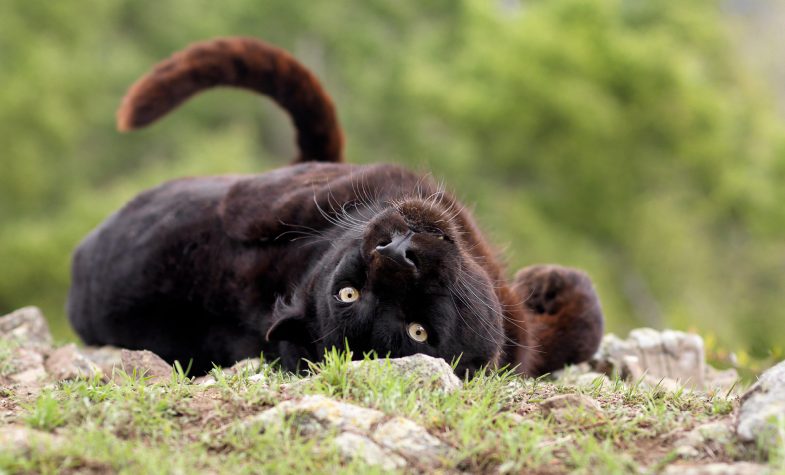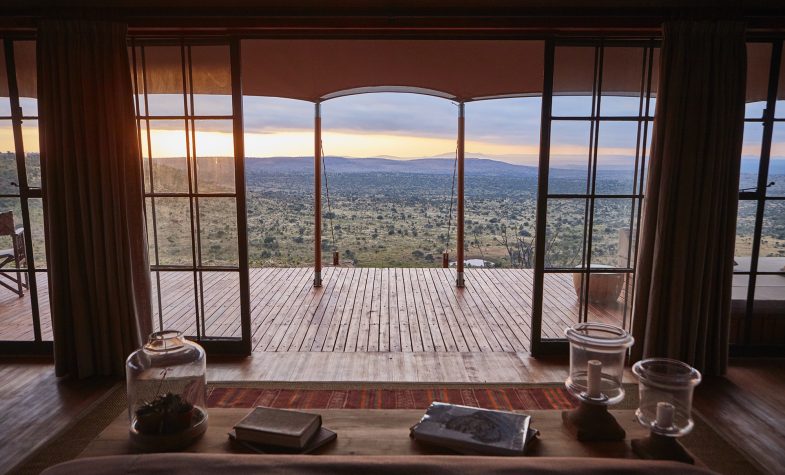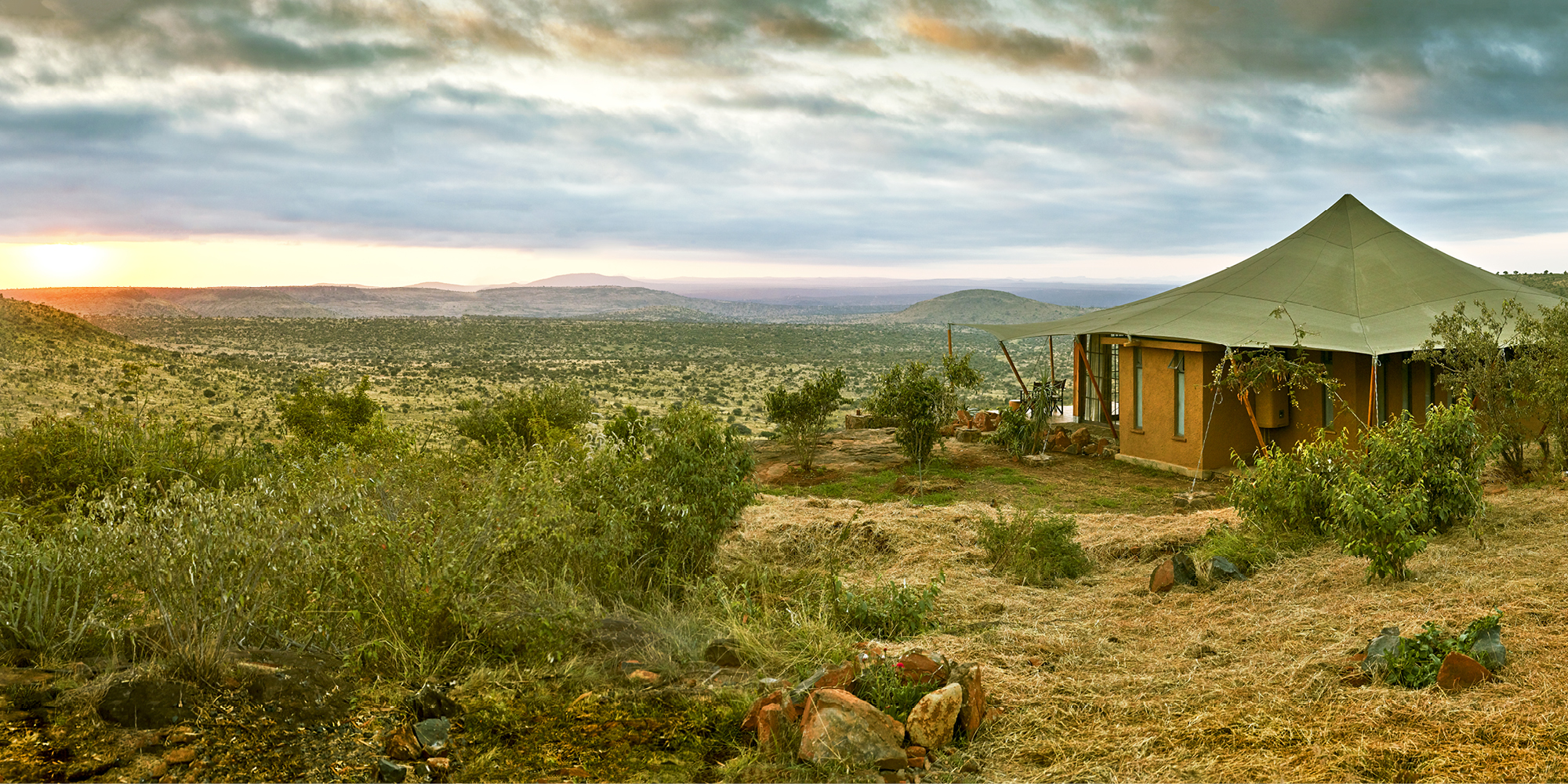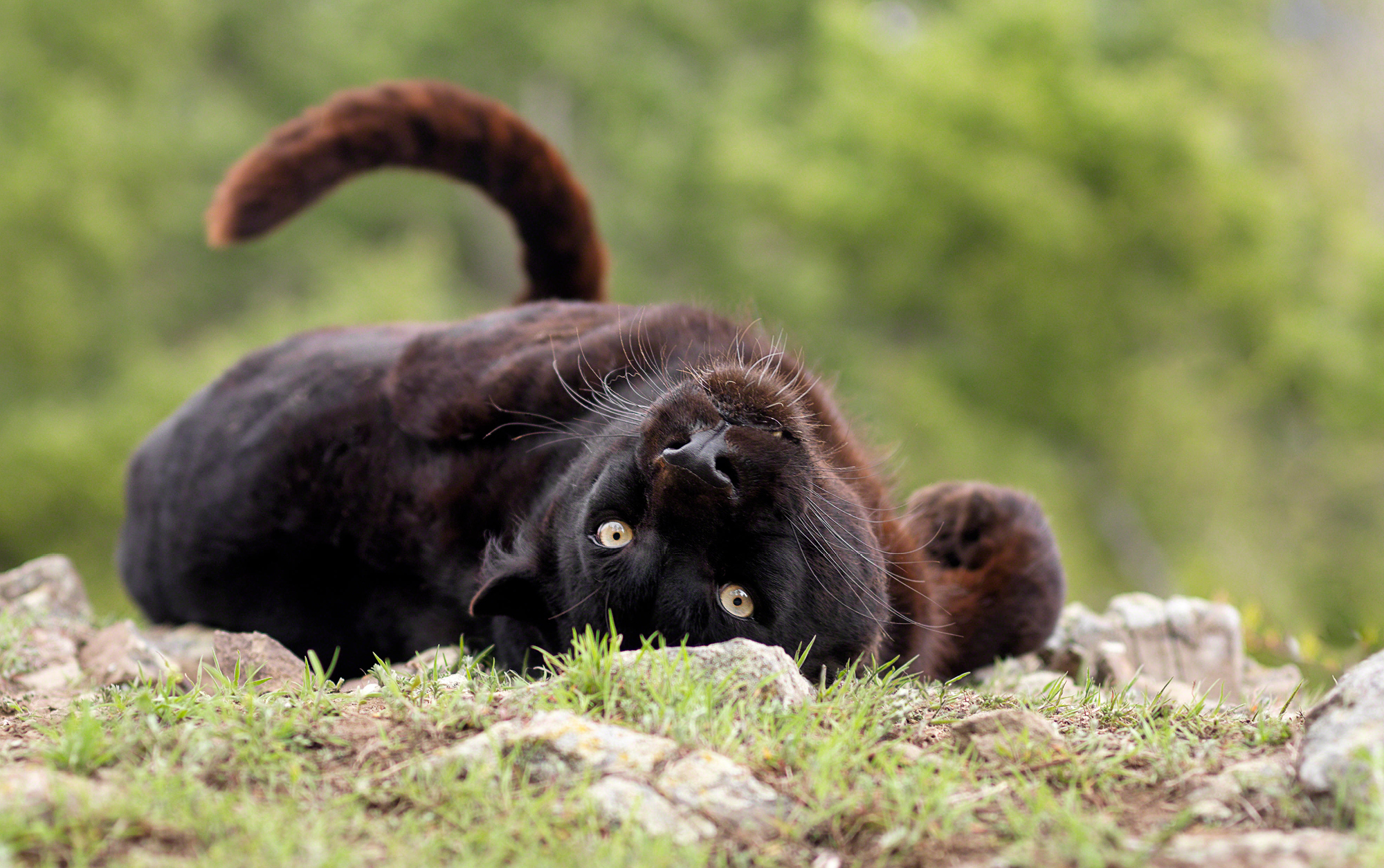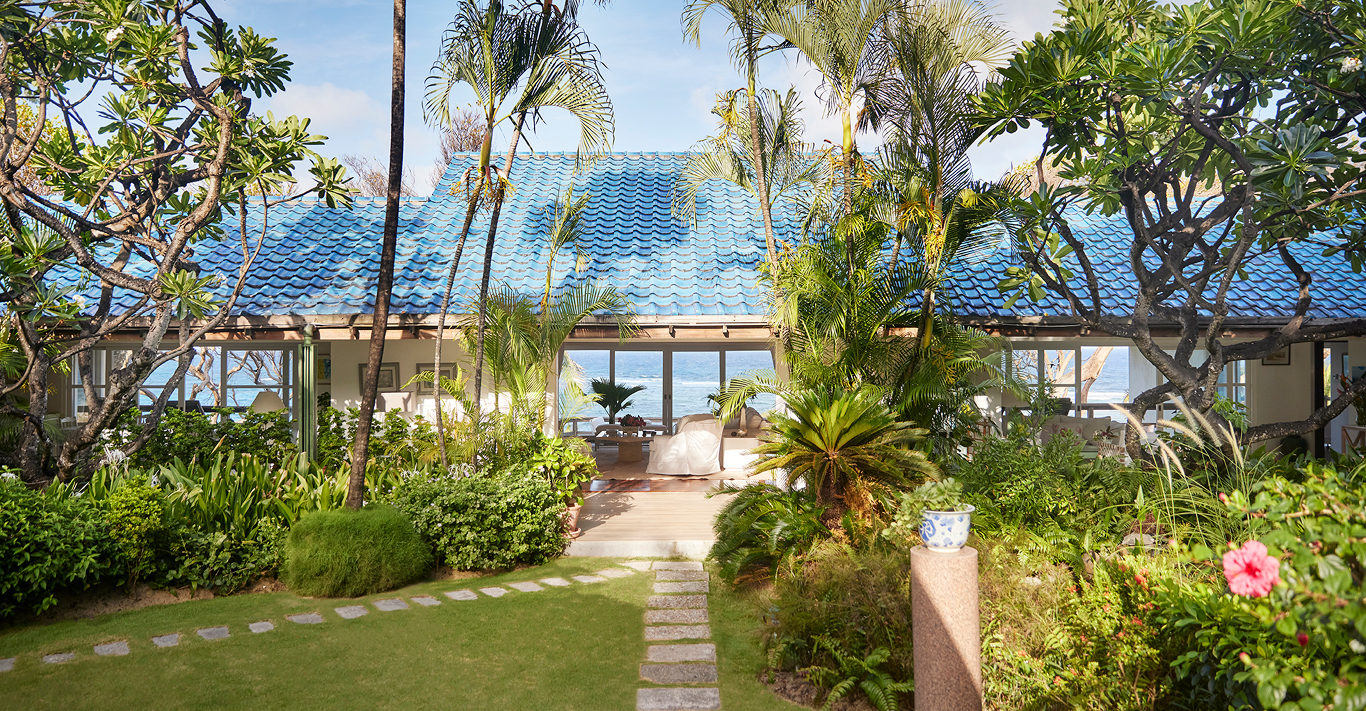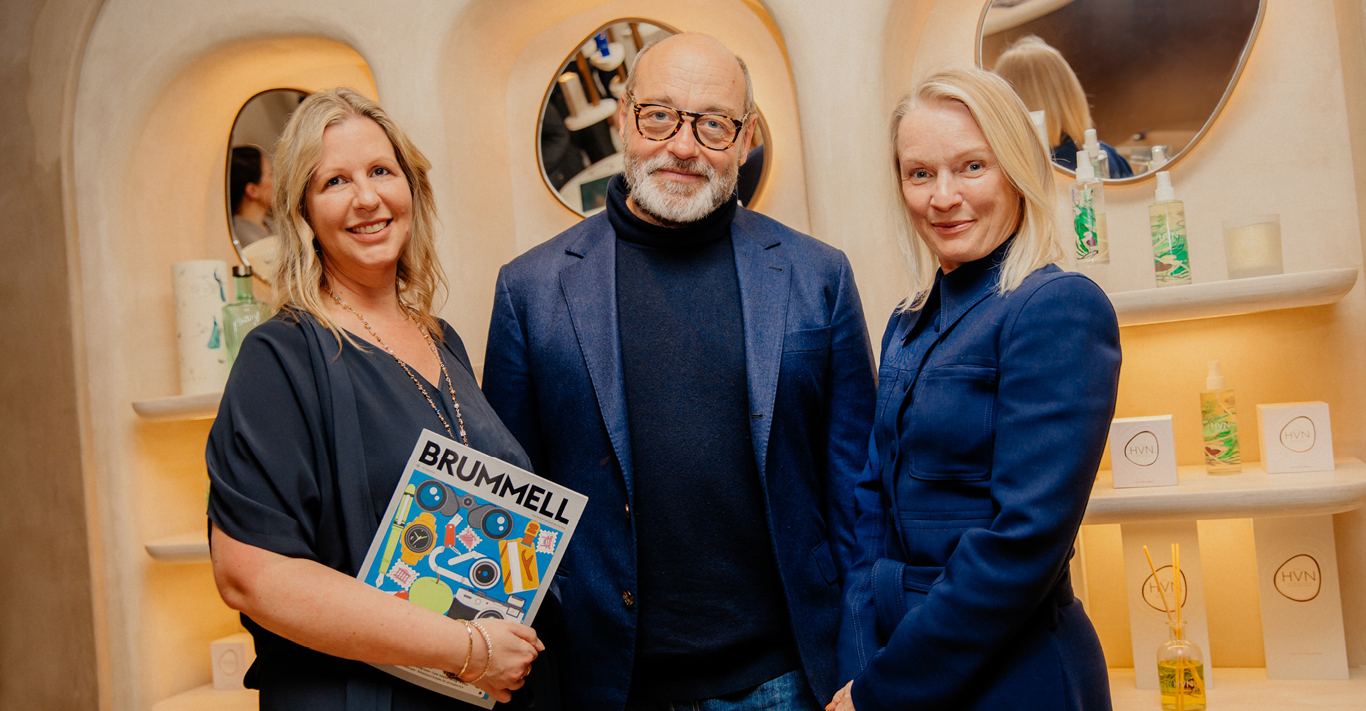WORDS
Ian Belcher
We’re being watched. Call it a sixth sense, but I’m certain a sinuous predator with 20/20 vision is clocking our every move. Somewhere out there, among the waving ochre grass and boscia trees, a big cat’s eyes are lasered on our backs. Trust me, I just know it.
Why the alarming intuition? Blame the landscape. This is a leopard’s des res. It’s not just the tangled mattress of branches overhanging a dry gully – the perfect lair for ambushing prey – it’s the steep boulder-strewn escarpment: a safe haven for a mother and cubs. Were Hercule Poirot present, he’d point to the bones of a recent kill and claw marks in the tree bark as finalpieces in the jigsaw.
If my guide and I are being stalked – I fear I’m the vulnerable runt of the litter – the chances are it’s by no ordinary carnivore. We’re at the southern tip of northern Kenya’s Loisaba Conservancy: ground zero for the world’s hottest feline. Earlier this year, deep in the moonlit night, a nearby motion-activated camera filmed a lithe muscular hunter, its diamond eyes glowering from a dark skull – the first photographic proof of a wild black leopard. Cue a social media bush fire. Within days the images reached an estimated 1.3 billion people.
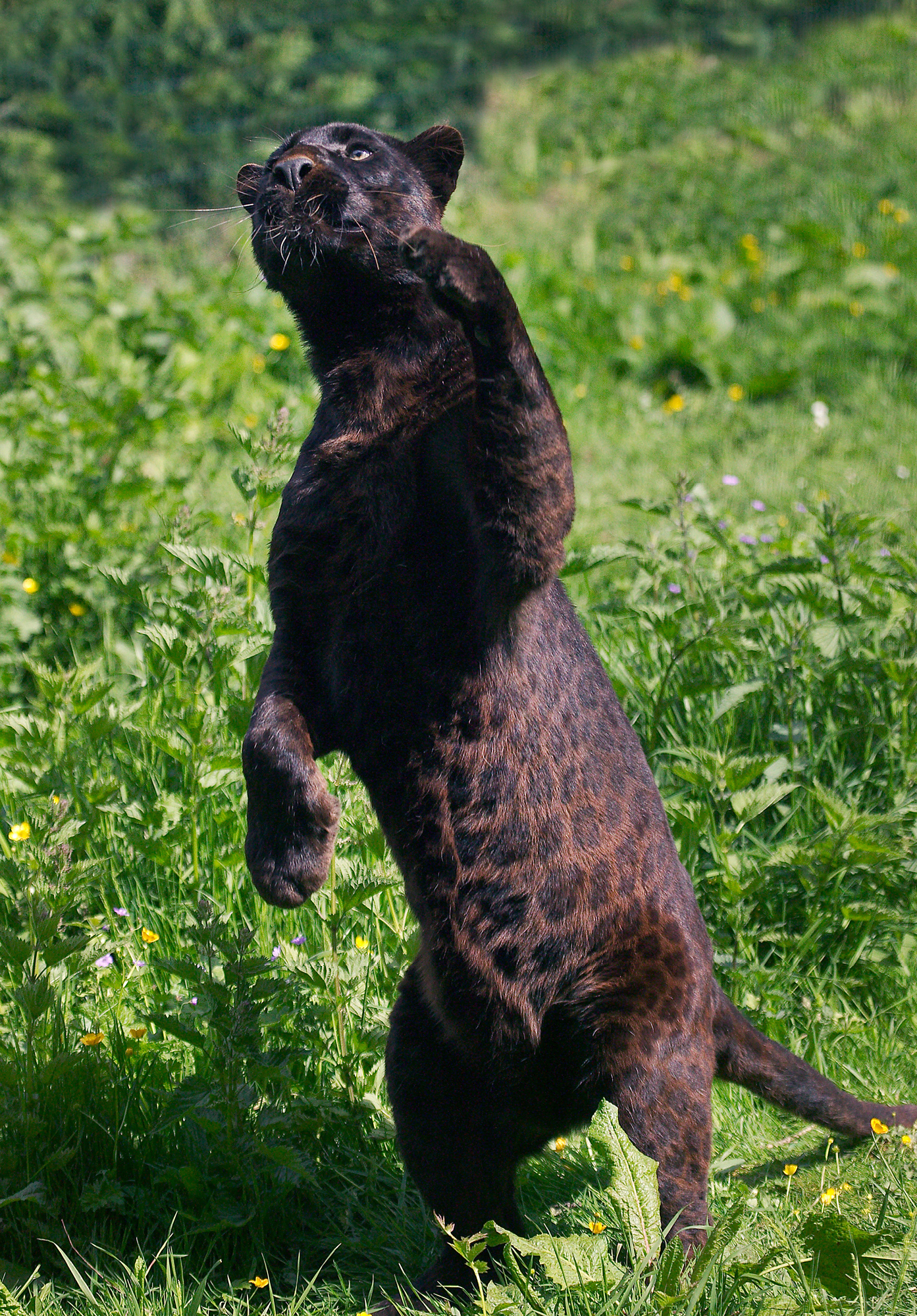
Yet the star remains fabulously reclusive: the cat world’s Greta Garbo. For any chance of an encounter, Loisaba is the place to be. An ecotourism hotspot, it partners with several leading conservation NGOs, from Lion Landscapes and Space for Giants to San Diego Zoo. Guests enjoy a privileged backstage pass to witness the work of expert naturalists, from PhD researchers to animal trackers.
But before the leopards, the lodge. Lodo Springs, opened earlier this year, eschews indigenous safari memorabilia for exotic foreign species: 17th-century French walnut wardrobes, 1950s American bar stools, vintage Ghanaian fabrics. They inhabit enormous rooms with glass-paned walls worthy of a Manhattan loft.
Remarkably, Lodo’s location trumps its interiors. Lining the escarpment lip, it offers elegy-inducing views of rolling hills above the Ewaso Nyiro
river valley. On my first afternoon I sit silently, mesmerised by battalions of clouds advancing above a massive ocean of bush. Somewhere out there, in the distant haze, lies Mount Kenya – and the iconic black leopard.
Our mission is helped by multiple motion- activated cameras. San Diego Zoo’s leopard research, the first in Kenya’s history, has placed 56 across Loisaba and neighbouring Mpala conservancies, investigating the animal’s population and territory. By simultaneously helping local farmers protect their livestock against predators, the programme aims to reduce tit-for-tat killing of big cats.
To reach the first camera, our Land Rover hammers across rutted grassland and slaloms around boulders, before we yomp up a rocky hillside. Directly above us, just days ago, a lion killed a baboon. Today all’s quiet. The camera’s card has fresh footage of hyrax and porcupine, but none of Loisaba’s estimated 25 to 40 leopards.
Next morning is more promising. An hour’s drive takes us to the southern border, within a big cat’s whisker of Lorok – site of February’s famous footage. En route, research assistant Ambrose Letoluai reveals he’d actually filmed the creature several times before a visiting photographer broke the story and took the glory. Locals, who’d reported sightings for years, were astonished at the global media hysteria. ‘Even my grandma knew about the leopard.’
And perhaps it’s becoming bolder. Someone recently sent him a snap of the black cat, taken on a phone through a car window in broad daylight. It’s definitely breeding. Researchers have now identified five more, including a mother and cubs, one black, one golden. Technically, my chance of a ‘spot’ has risen 500 per cent, although I’m not holding my breath. I’ve as much chance of a EuroMillions jackpot as seeing the leopard, nicknamed Lupita after Lupita Nyong’o, the Kenyan star of last year’s Black Panther movie.
Still, hope overcomes statistics. As we approach Lorok, anticipation grows. The only sign of life is relentlessly chirping cicadas but that’s good news – animals instinctively know when predators are around. Sadly, predators know when humans are around. Not only is there no wildlife, not even the ubiquitous dik-diks – tiny antelopes dubbed ‘cheetah chips’ – but there are no visible leopards, black or otherwise. Indeed, there’s not even a camera. ‘Crazy hyenas,’ mutters Letoluai, ‘they chew through the straps and steal them as playthings.’
Perhaps hyenas appreciate iconic scents. Leopards certainly do. After zoologists discovered they’re suckers for Chanel No.5 and CK Obsession, the perfumes are sprayed around the cameras (as they are to attract jaguars in Guatemala and man-eating tigers in India). The key ingredient is synthetic civet musk, although vanilla and ylang-ylang also tickles
the cats’ nostrils: the true Lynx effect.
A healthy predator population needs a healthy supply of wild food. Loisaba happily obliges. Its prolific wildlife, including, on any given day, around 1,000 elephants, has formidable protection. The eyes and ears of surrounding communities assist its 68 well-armed guards. Local knowledge and support are essential weapons in the conservationist’s armoury.
Today, I’m to be pursued by two of the team. With their watery eyes and sagging jowls, Warrior and Machine could be hereditary peers. However, their 300 million scent receptors allow the bloodhounds to pursue poachers, criminals and missing persons. As I weave a deliberately bamboozling course crossing the airstrip and doubling back around random trees, I debate whether my role is to be an illegal hunter, cattle rustler or confused tourist. I like to keep my audience guessing.
I finally stop, crouching behind an acacia bush. Mr DeMille, I’m ready for my close up. The dogs’ harnesses are fitted and they’re off, snouts to the ground. Within minutes I’m located, arrested and led away for an iced gin and tonic.
While Warrior and Machine may be old school – they’re perfect sidekicks for Inspector Morse – Loisaba is a vast wilderness laboratory for cutting-edge conservation technology. Phone apps track collared lions with warnings texted to nearby farmers; pattern recognition software identifies giraffes from images transmitted by hidden cameras, and drones map invasive cactus. My sixth sense of being watched? The black leopard was only the half of it.
Lodo Springs from £811pp per night, full-board; elewanacollection.com. Return flights to Nairobi from £490pp; kenya-airways.com


